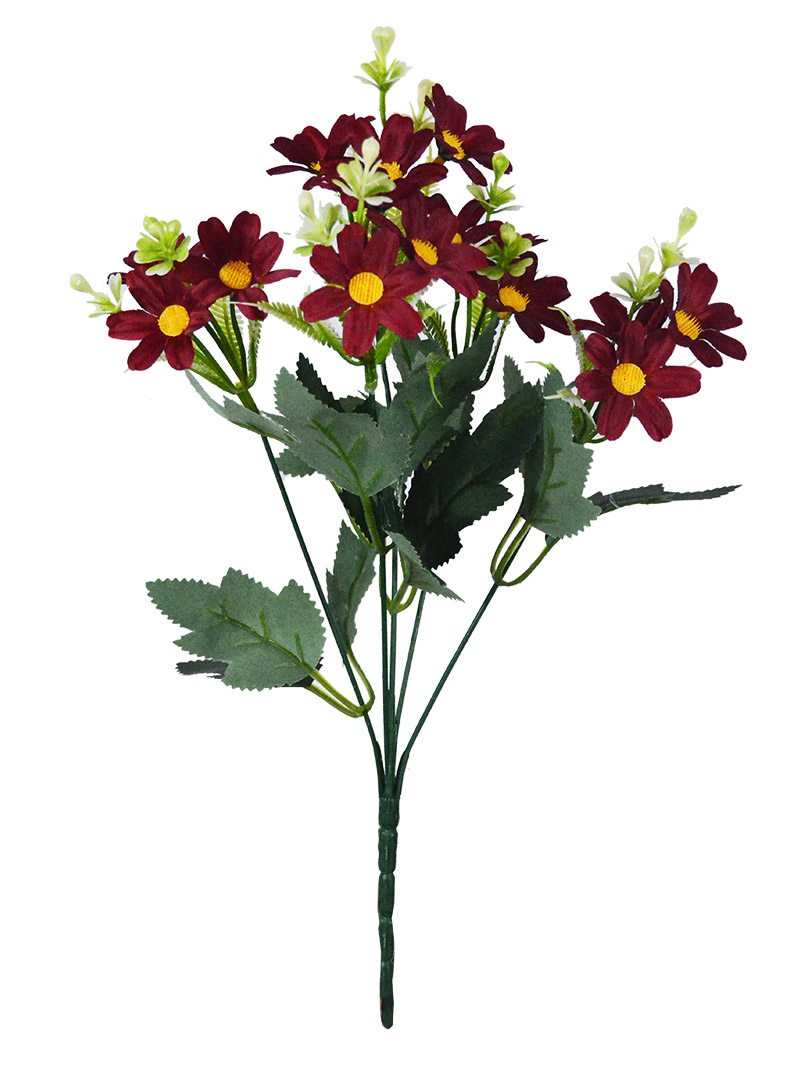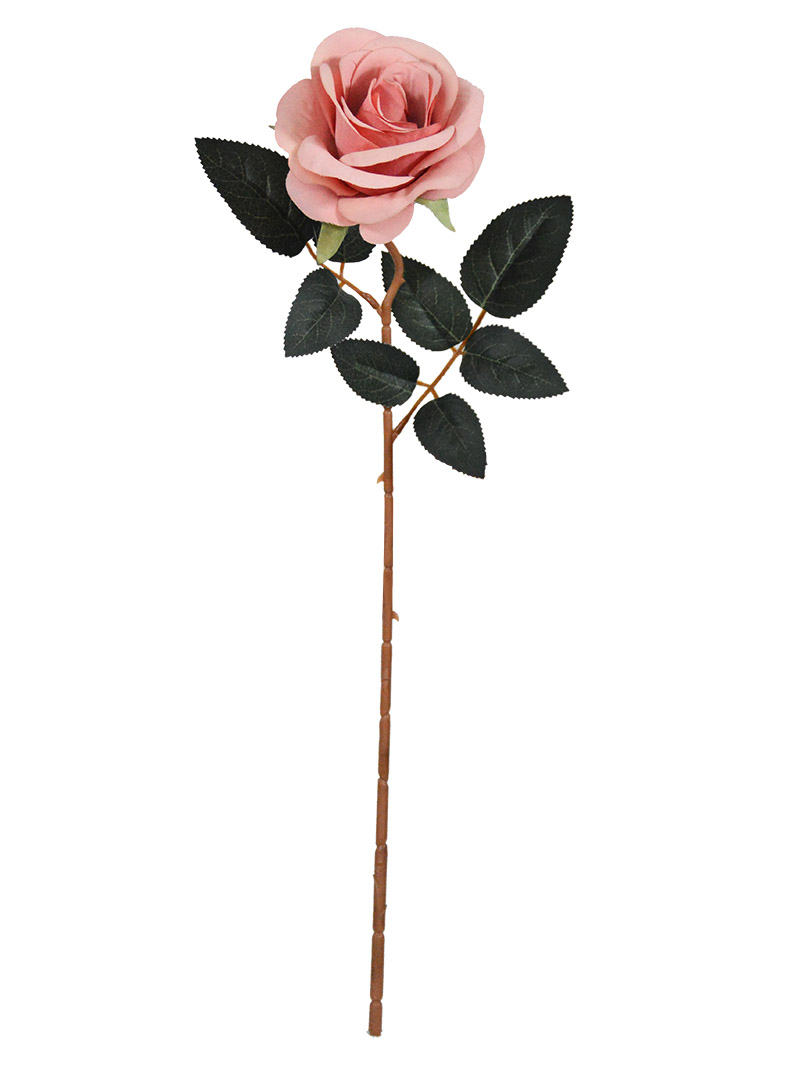Daisies are a girl's best friend.
Khara Scheppmann has 12 years of marketing and advertising experience, including proofreading and fact-checking. She previously worked at one of the largest advertising agencies in the southwest. Bundle artificial roses

There's nothing pretentious about daisies. You've loved these cheerful, common flowers since you learned to draw them in kindergarten. Perhaps it's because daisies grow in crayon colors: yellow centers ringed with white petals on plain green stems. Shasta daisies (Leucanthemum x superbum) are the ones you probably remember from childhood, and it's easy to add them to your own garden. Shasta daisies are an old-fashioned favorite for planting in a cutting garden, along a fencerow, or in a half-wild, meadow-inspired cottage garden. They won't attract the deer wandering through but will draw in butterflies when bursting with blooms in spring and summer. Shasta daisies are tough and tolerant but prefer well-drained soil and require full sun (at least six hours). Daisies can grow quite tall once established and are generally best planted in the back of the border. Shasta daisies like to self-sow, so deadheading flowers can help prevent spreading and becoming invasive. These flowers are toxic to pets.
Shasta Daisies are relatively easy to maintain after establishing new growth. These flowers tolerate full to partial sunlight and a variety of soil conditions. Also, Shasta Daisies are deer-resistant and drought-resistant perennials, so that these flowers will shine for a few years in your garden. Because of their availability to self-sow, the Shasta Daisy can overcrowd or invade an environment if not maintained.
Shasta Daisies love full, direct sunlight but can also thrive in partial sun. The more sunlight these plants receive, the more these flowers bloom throughout the season.
Keep soil moderately rich and fertile so that these flowers bloom. Shasta Daisies are not too particular about soil conditions, as they can survive in rich soil or soil with organic matter or compost. Soil should be well-drained because these flowers do not tolerate soggy soil.
Shasta Daisies are better when underwater rather than overwatering. These flowers are relatively drought-tolerant, needing about an inch of water weekly. Be sure to keep the soil moist yet not soggy.
Similarly to its water, soil, and sun conditions, Shasta Daisies tolerate many different temperature conditions. These flowers are hardy in some areas but should remain out of humid environments because it contributes to soggy soil, which can cause rot.
Adding fertilizer, compost, or other organic material to the soil helps retain the nutrients for Shasta Daisies, especially during its blooming season. Use a well-balanced fertilizer every month during summer to supplement it in its growing season.
Deadhead your daisies to encourage continuous blooming. You can even shear the long flower stems for a bushier, more floriferous plant—water once a week during hot, dry spells. Tackle any pests with an intense burst of water from a garden hose or insecticidal soap. After the first frost and the foliage dies back, use pruning shears to cut Shasta Daisies back two or three inches above the soil. Remove dying branches.
To protect the roots, add mulch around the plant's crowns to preserve it through its winter dormancy and remove it in the spring. If you choose, leave dying leaves on stems to add extra protection from colder weather and then remove them to promote new growth in the spring.
Daisies are perennial, so consider your patch an ongoing addition to the garden. One way to propagate Shasta Daisies is by dividing them every two or three years during early spring before flowers appear or early fall after the flowers fade.
To grow from seed, sow the seeds indoors eight weeks before the final spring frost. Barely cover with seed-starting mix and keep moist and at around 70°F. The seedlings will emerge in two to three weeks, at which point they should be placed under plant lights or in a sunny window. Harden off seedlings before transplanting them outdoors by first placing them in the shade and gradually exposing them to more sunlight. Bring Shasta Daisies indoors any time there is a danger of frost.
Transplant Shasta Daisies into the garden in spring or fall. Autumn planting has the advantage of establishing root systems before flowering. Each four-inch transplant you set out in the fall will produce, at a fraction of the cost, roughly the same amount of blooms as a one-gallon plant purchased in the spring. But don't fret if you waited until spring to go daisy crazy—plants continue to grow all year. Plant the rootball level with the surrounding soil, mulch lightly, and water thoroughly at least once a week until your daisies establish. By next spring, your daisies will tolerate occasional dry spells.
Bed down Shastas for winter by tucking mulch around each plant, taking care not to cover leaves. The rosettes of foliage stay green year-round in much of the South. Some selections are known for their tolerance for icy weather and produce flowers nonstop for at least a month in the spring and sporadically until cold weather returns. No matter how much the temperatures drop during the winter, Shasta Daisies will reward you with bright bouquets filled with heart-warming blooms.
While Shasta Daisies are low-maintenance compared to other plants, these cheerful flowers are still susceptible to some diseases and pests. Some pest problems include aphids, slugs, and earwigs. Leaf spots and Chrysanthemum nematode also impact Shasta Daisies. Chrysanthemum nematode is a roundworm pest found in water that can spread to the plant's stem, causing leaves to turn yellow and brown and drop when infected.
Shasta Daisies might experience curling leaves because of wilt or rot. Areas that experience humid, hot conditions leave Shasta Daisies susceptible to root rot. If you notice your plant's leaves curling, remove any diseased foliage and cut away the infected roots. The soil should be well-draining to prevent this from happening.
Fungus, including acremonium and verticillium wilt, can impact Shasta Daisies, causing leaves to first turn yellow, then droop, and drop as the disease spreads throughout the plant. Verticillium wilt occurs when the temperatures are colder, while acremonium is usually visible on one side of the plant. Discard diseased stems and roots and maintain proper sun and watering schedules to prevent the disease from spreading.
American Society for the Prevention of Cruelty to Animals. Daisy.

Mother's Day Decoration By clicking “Accept All Cookies”, you agree to the storing of cookies on your device to enhance site navigation, analyze site usage, and assist in our marketing efforts.